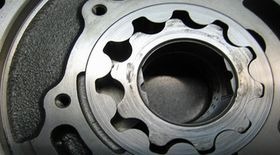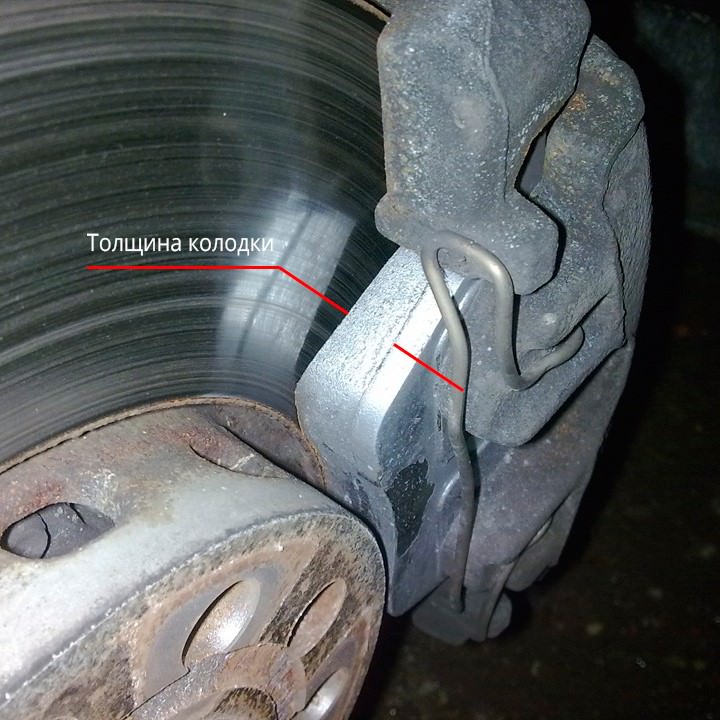
oil pump breakdowns
Content
oil pump breakdowns can significantly damage the internal combustion engine of a car, because they disrupt the normal circulation of engine oil through the system. The reasons for the breakdown may be poor-quality oil used, its low level in the crankcase, failure of the pressure reducing valve, oil filter contamination, clogging of the oil receiver mesh, and several others. You can check the condition of the oil pump with or without dismantling it.
Signs of a broken oil pump
There are several typical symptoms of a failed oil pump. These include:
- Reducing the oil pressure in the internal combustion engine. This will be signaled by the oiler lamp on the dashboard.
- Increasing the oil pressure in the internal combustion engine. oil is squeezed out of various seals and joints in the system. For example, oil seals, gaskets, oil filter junctions. In more rare cases, due to excess pressure in the oil system, the car refuses to start at all. This is because the hydraulic compensators will no longer perform their functions, and, accordingly, the valves do not function well.
- Increase in oil consumption. appears due to leakage or fumes.
At the same time, you need to understand that some of them may also indicate the failure of other elements of the oil system. Therefore, it is desirable to carry out the verification in the complex.
Reasons for a breakdown of the oil pump
The reason why the oil pump failed can be determined by diagnostics. There are at least 8 basic oil pump faults. These include:
- Clogged oil sieve. It is located at the inlet to the pump, and its function is to coarsely filter the engine oil. Like the oil filter of the system, it gradually becomes clogged with small debris and slag (often such slag is formed as a result of washing the internal combustion engine with various means).
- failure of the oil pump pressure reducing valve. Usually the piston and spring included in its design fail.
- Wear on the inner surface of the pump housing, the so-called "mirror". appears for natural reasons during the operation of the motor.
- Wear of the working surfaces (blades, splines, axles) of the oil pump gears. It happens both with time of long operation, and also due to rare replacements of (very thick) oil.
- Using dirty or unsuitable engine oil. The presence of debris in the oil can be for various reasons - inaccurate installation of the pump or filter, the use of low-quality lubricating fluid.
- Careless assembly of the pump. namely, various debris was allowed to enter the oil or the pump was incorrectly assembled.
- Drop in oil level in the engine crankcase. Under such conditions, the pump operates with excessive capacity, due to which it overheats and may fail prematurely.
- Dirty oil filter. When the filter is very clogged, the pump has to make significant efforts to pump the oil. This leads to its wear and tear and partial or complete failure.
Regardless of the reason that caused the partial failure of the oil pump, it is necessary to carry out a detailed check and, if necessary, repair or replace it completely.
How to determine the failure of the oil pump
There are two types of pump testing - without dismantling and with dismantling. Without removing the pump, you can only be sure of its breakdown if it is already in a “dying” state, so it’s better to remove it anyway to perform detailed diagnostics.
How to check the oil pump without removing
Before you check the pump, it is worth checking the oil pressure in the system using a pressure gauge. So you can make sure that the oil pressure light is working correctly and lit up for a reason. To do this, the pressure gauge is screwed in instead of the emergency lamp pressure sensor.
Please note that the pressure value often drops exactly “hot”, that is, on a warmed-up internal combustion engine. Therefore, the test must be carried out on a warm engine and idle. The minimum and maximum pressure values for different machines will be different. For example, for a VAZ "classic" (VAZ 2101-2107), the value of the minimum emergency pressure is 0,35 ... 0,45 kgf / cm². It is in such conditions that the emergency lamp on the instrument panel is activated. The normal pressure value is 3,5 ... 4,5 kgf / cm² at a rotation speed of 5600 rpm.
On the same "classic" you can check the oil pump without removing it from its seat. To do this, you need to dismantle the distributor, and remove the pump drive gear. further evaluate its condition. If there are numerous seizures on the blades or on the gear axis on its surface, then the pump must be dismantled. also pay attention to the gear splines. If they are knocked down, then the pump is wedged. This is usually due to the presence of debris and/or slag in the oil.
Another check without dismantling the pump is to check the backlash of its rod. This is done in the same way, with the distributor removed and the gear dismantled. you need to take a long screwdriver and simply move the stem with it. If there is a backlash, then the pump is out of order. On a normal working pump, the gap between the surfaces of the rod and the housing should be 0,1 mm, respectively, and there is practically no play.
Oil receiver mesh
For further verification, you need to dismantle and disassemble the pump. This is also done in order to further rinse their accumulated debris. First you need to unscrew the oil receiver. In this case, it is necessary to check the condition of the sealing ring present at the junction. If it has hardened significantly, it is advisable to change it. Pay special attention to the oil receiver mesh, since most often it is it that causes the pump to pump oil poorly. Accordingly, if it is clogged, it needs to be cleaned, or even completely changed the oil receiver complete with a mesh.
Checking the pressure relief valve
The next item to check is the pressure reducing valve. The task of this element is to relieve excessive pressure in the system. The main components are a piston and a spring. When the extreme pressure is reached, the spring is activated and the oil is poured back into the system through the piston, thereby equalizing the pressure. Most often, the breakdown of the oil pump pressure relief valve is due to the failure of the spring. It either loses its rigidity or bursts.
Depending on the design of the pump, the valve can be dismantled (flared). Next, you need to evaluate the wear of the piston. It is advisable to clean it with very fine sandpaper, spray with a cleaner spray for further normal work.
It is imperative to inspect the place of contact of the valve to the place of its contact on the body. There should be no scratches or scoring. These defects can lead to a decrease in the pressure in the system (decrease in the work efficiency of the pump). As for the valve spring for the same VAZ "classic", its size in a calm state should be 38 mm.
Pump housing and gears
It is necessary to inspect the condition of the inner surfaces of the cover, the pump housing, as well as the condition of the blades. If they are significantly damaged, the efficiency of the pump decreases. There are several type tests.
Checking the clearance between the gear and the oil pump housing
The first is to check the gap between the two gear blades in contact. The measurement is made using a set of special probes (tools for measuring gaps with different thicknesses). Another option is a caliper. Depending on the model of a particular pump, the allowable maximum clearance will differ, so the relevant information must be clarified additionally.
For example, the new original Volkswagen B3 oil pump has a clearance of 0,05 mm, and the maximum allowable is 0,2 mm. If this clearance is exceeded, the pump must be replaced. A similar maximum value for the VAZ "classics" is 0,25 mm.
Generation on the oil pump gear
The second test is to measure the clearance between the end surface of the gear and the pump cover housing. To perform a measurement from above, a metal ruler (or similar device) must be placed on the pump housing and using the same feeler gauges, measure the distance between the end face of the gears and the installed ruler. Here, similarly, the maximum allowable distance must be specified additionally. For the same Passat B3 pump, the maximum allowable clearance is 0,15 mm. If it is larger, a new pump is needed. For VAZ "classics" this value should be in the range of 0,066 ... 0,161 mm. And the maximum emergency clearance is 0,2 mm.
In the VAZ oil pump, you also need to pay attention to the condition of the bronze bushing of the drive gear. Removed from the engine block. If it has a significant amount of bullying, then it is better to replace it. Similarly, it is worth checking the condition of its seat. Before installing a new bushing, it is advisable to clean it.
If damage is found to the "mirror" and the blades themselves, you can try to grind them using special equipment in a car service. However, this is often either not possible or impractical, so you have to buy a new pump.
Additional tips
Separately, it is worth noting that in order to avoid problems with the oil system, including with the pump, you need to periodically monitor the oil level in the crankcase, check its quality (whether it has turned black / thickened), change the oil and oil filter in accordance with the regulations. And also use engine oil with the characteristics prescribed by the engine manufacturer of the car.
If you need to buy a new oil pump, ideally you need to buy, of course, the original unit. This is especially true for cars of the middle and higher price range. Chinese counterparts not only have a short service life, they can also cause a problem with oil pressure in the system.
Hack and predictor Aviator
a breakdown, even a minor one, of the oil pump can lead to serious damage to other elements of the internal combustion engine. Therefore, if there are signs of its breakdown, it is necessary to carry out an appropriate check as soon as possible, and if necessary, repair or replace it.
It is worth checking it yourself only if the car owner has the appropriate experience in performing such work, as well as an understanding of the implementation of all stages of work. Otherwise, it is better to seek help from a car service.

